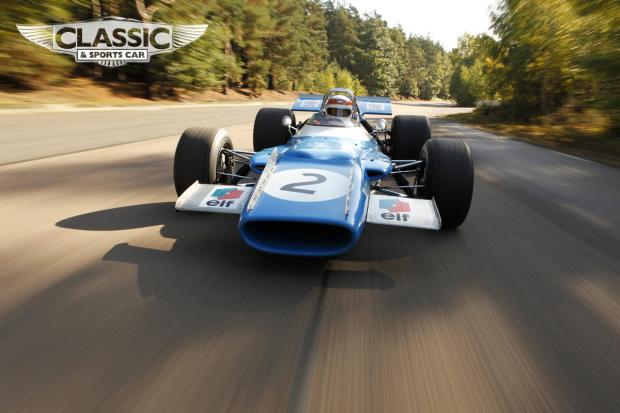It was when journalist Gérard ‘Jabby’ Crombac had introduced Tyrrell to a dynamic French executive named Jean-Luc Lagardère at a 1965 Formula 2 prize-giving that the pieces had fallen into place for the triumphant alliance between Matra, Tyrrell, Cosworth and Stewart. Spurred on by F2 title success with the MS7 in ’67, Matra was receptive to Tyrrell’s F1 ambitions. And, with the promise of DFV engines and star Stewart available after being messed around by Ferrari, Le Sang Bleu was set for a long-awaited rebirth.
After the short-lived MS9 – effectively an MS7 F2 design modified for DFV power – Matra’s chassis man Bernard Boyer designed the MS10 in which Stewart delivered Matra’s first GP victory around a rain-soaked Zandvoort in June 1968. The season seemed jinxed, first thwarted by Stewart’s injured wrist from an F2 crash at Jarama and then a fuel system problem during the Championship decider in Mexico.

“The MS10 was a great car,” says Stewart. “Without the wet conditions at both Zandvoort and the Nürburgring, which put less strain on my wrist, it might have been a different result but those Dunlops were fantastic in the rain. Ken firmly believed in tyre testing. We had a good chance of winning in Mexico, but one of the fuel pumps clogged up and I was out. Jimmy had died in April and I don’t think I was ready to be World Champion, while Graham was a natural and a great talker. For ’69, we were fired up. Ken now knew the Matra team and had a lot of confidence in Jean-Luc. Boyer and his boys were all for a fancy, state-of-the-art design to match Chapman, but Ken insisted that it had to be tough and practical. The MS80 was beautifully built and came to Oakham complete bar the engine. Boyer concentrated on keeping the fuel load around its centre of gravity, which really helped the handling. Other new features were inboard brakes at the rear and outboard spring/dampers at the front to keep them cooler. I didn’t test the car until practice for the South African GP, but Ken decided it wasn’t ready so I drove the old MS10.”

After Stewart’s fraught experiences with the woeful BRM H16, the French single-seaters were a joy: “They were dynamite to drive, particularly the F2 cars. We struggled a little at the beginning of the 1969 season. In Spain the Dunlops weren’t as good as Firestone and Goodyear and we were lucky to win, while at Monaco both Beltoise and I suffered cracked UJs.” But it all came good in front of an expectant French crowd at Clermont-Ferrand, where Stewart and the MS80 were on imperious form. The Scot was never threatened from pole and headed a Matra 1-2 from team-mate Beltoise: “That was a real driver’s track, which had to be driven with prudence. The area was volcanic and if you went off you always got a puncture.” The home victory was a great boost for Matra and sponsor Elf, but Stewart had a big scare in practice for the British Grand Prix two weeks later at Silverstone: “I was following Piers [Courage] through Woodcote when he hit the kerb. A piece of concrete flew up, just missed me but hit my rear tyre. Woodcote was flat-out in those days – about 150mph – and the puncture spun me off at high speed. We took down three rows of catch-fencing before hitting the sleepers. The effect was like throwing a tennis ball into a net, which was good until the car turned over. Then it wrapped the car and you’d be trapped. It was a high-speed accident and unfortunately my father was there to see it.”









